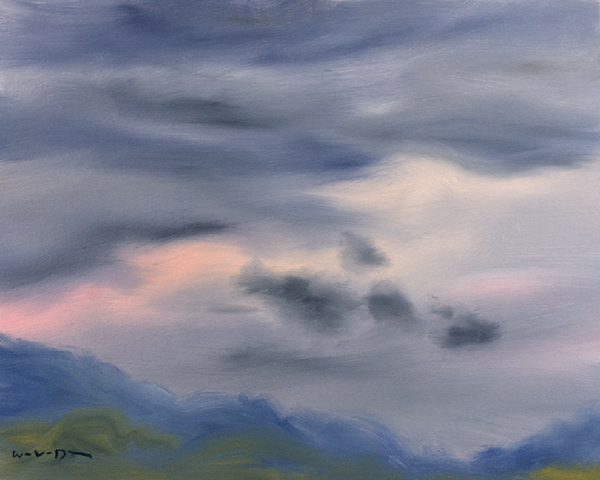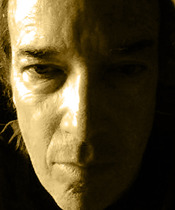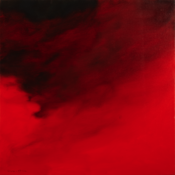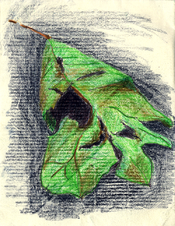Sunset, Friday, 28 August 2009 / Notes from Pittsburgh, Part 2
 William Theodore Van Doren. Neville Island, Pittsburgh, Pa. Oil on paper, 16 x 20.
William Theodore Van Doren. Neville Island, Pittsburgh, Pa. Oil on paper, 16 x 20.
We’ve been staying at a place in the Ohio River west of the city, Neville Island – named for a general in the Revolutionary War.
Neville Island, five miles long, is a wonderful landscape – maybe too wonderful, as I’ve tried four times to do some proper sketches but nothing has quite worked. That’s largely because the island’s wonders are industrial – big old factory buildings, steel fabrication sheds, railroad sidings, chemical tanks – complicated structures that always seem to take me time to master – to assimilate to the point where I feel I know what to do with them.
The same will be true for any painting I manage to do of the area around downtown Pittsburgh – perhaps my favorite skyline (after my sentimental favorite, Baltimore) – somehow even more concentrated and intensely articulated than Manhattan, and more fantastic, as in almost not real, like a magic fortress. We went up the Duquesne Incline, across the Ohio from the city, and I sketched from a vantage point almost as high as the tallest buildings. But it will take several more attempts plus Laura’s photographs to even begin to get my arms around Pittsburgh.
Back to Neville Island – once the “market basket of Pittsburgh,” it was in the process of being industrialized by World War I, when the world’s largest munitions factory was planned here. Even though the war ended before the plant was completed, the project opened the way for other major industries. In World War II the place was jumping – the Navy built 300 ships here, LSTs (Landing Ship Tanks), very large craft that could deliver 20 tanks and 160 combat troops. Then the decades after the war eventually left Neville Island a bit of an environmental shipwreck in the Ohio – a cleanup site of picturesquely falling-down or overgrown infrastructure.
The hotel where we’re staying, built last year, is a key part of the island’s comeback. I hesitated to inform my spouse that we were staying on an island with a significant amount of acreage considered “brownfields.” The beautiful big sports center and gym at the western tip of the island was built on reclaimed land once known as Poison Park.
A brownfield site is real property, the expansion, redevelopment, or reuse of which may be complicated by the presence or potential presence of a hazardous substance, pollutant, or contaminant.
(Check out Western Pennsylvania Brownfields Center at Carnegie Mellon University.)
Now Neville Island holds a hodgepodge of industries on the two-thirds or so of the island immediately to our east, and a small, sleepy residential community just to our west, connected by an often empty four-lane street built some 70 years ago by the Navy. The island’s flat topography (despite high wooded ridges across the Ohio on either side) and the quiet neighborhood of bungalows and modest old houses contribute to an aura, on the west end, much like that of an old beach town about ten blocks in from the ocean. The industries to the east seem to include a few holdovers from the days of steel, chemicals and petro products, but also green businesses such as metals recyclers and other new concerns that probably need the major tax incentives offered here. I get the impression that at least some of these are startups that don’t mind if part of a factory’s roof may be missing or windows are blown out, as long as they can find some space that doesn’t leak.
As for me, I definitely don’t care if parts of the roof are missing and windows are gone. I wish Neville Island success in recovery, but won’t mind if it holds on to its broken-down past a little while longer.
 Sunday, August 30, 2009 at 10:38AM | by
Sunday, August 30, 2009 at 10:38AM | by  BVD | in
BVD | in  Sunset Paintings | tagged
Sunset Paintings | tagged  Carnegie Mellon University,
Carnegie Mellon University,  Duquesne Incline,
Duquesne Incline,  Neville Island,
Neville Island,  Ohio River,
Ohio River,  Pittsburgh,
Pittsburgh,  brownfields | | Comments Off
brownfields | | Comments Off 




